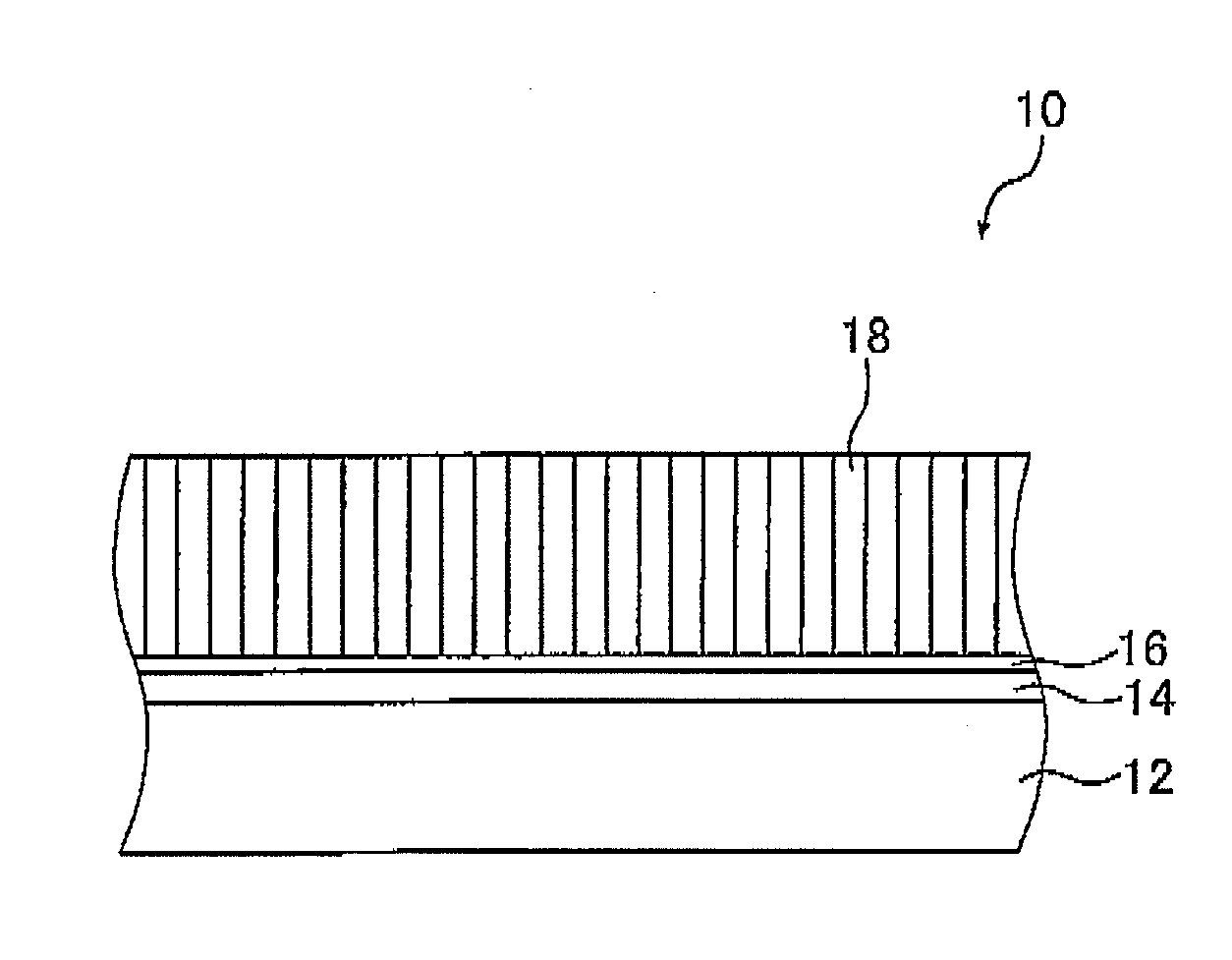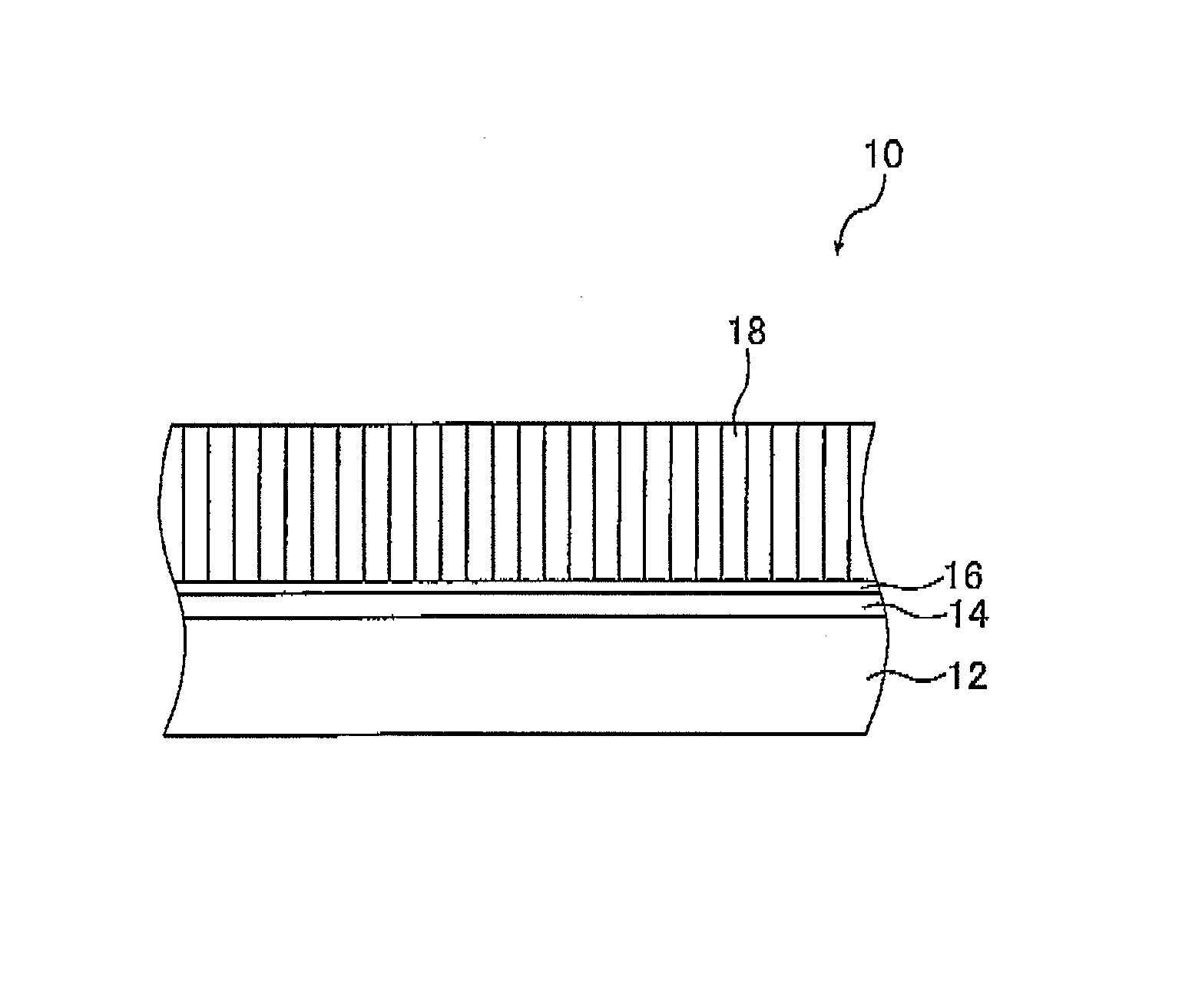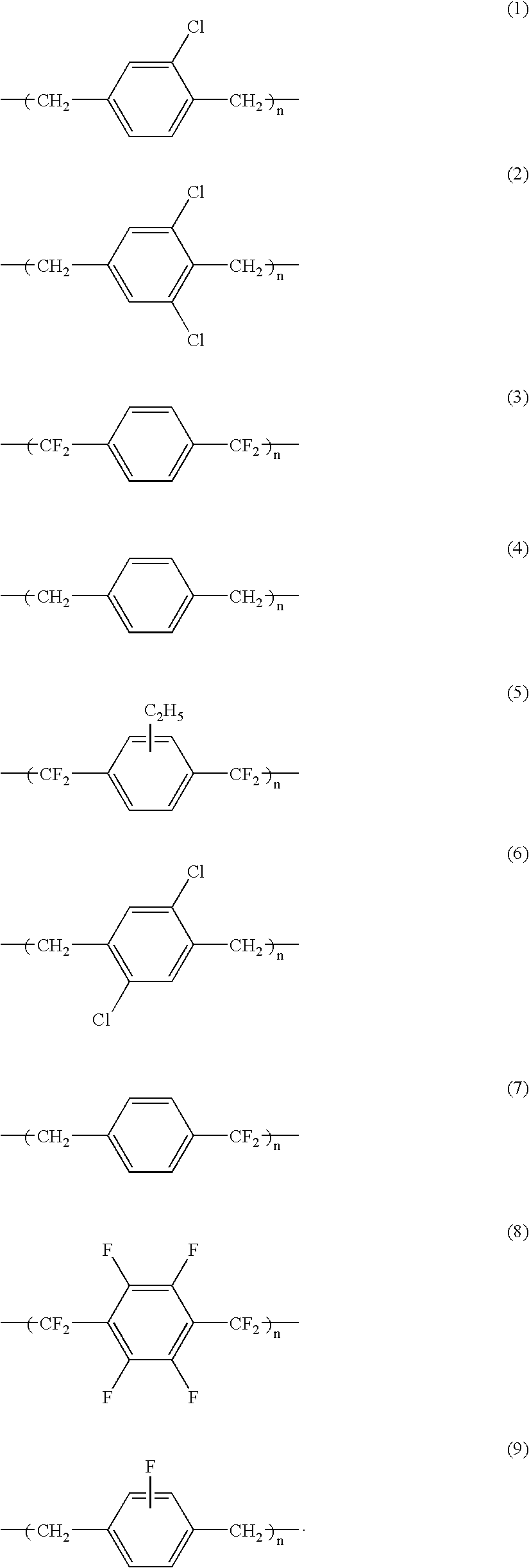Radiation image conversion panel
a technology of radiation image and conversion panel, which is applied in the direction of conversion screen, nuclear engineering, luminescent composition, etc., can solve the problems of insufficient durability to prevent the phosphor layer, rendering the conversion panel unusable, etc., and achieves excellent durability, sufficient adhesion force, and prevent the effect of substrate corrosion
- Summary
- Abstract
- Description
- Claims
- Application Information
AI Technical Summary
Benefits of technology
Problems solved by technology
Method used
Image
Examples
example 1
[0089]A plate made of an aluminum alloy (A5083) whose surface had been mirror-polished and which had an area of 100 mm×100 mm and a thickness of 10 mm was prepared for the substrate 12.
[0090]The surface of the substrate 12 on which the phosphor layer 18 was to be formed was cleaned with a cleaner, rinsed with water and dried. Thereafter, the substrate surface was subjected to a primer treatment using trimethoxysilylpropyl methacrylate as a primer in a vacuum device including an evaporation chamber and a substrate treatment chamber.
[0091]More specifically, the substrate 12 was loaded into the substrate treatment chamber of the vacuum device at its predetermined position and a vessel containing trimethoxysilylpropyl methacrylate was set in the evaporation chamber.
[0092]After the vacuum device was closed, the substrate treatment chamber was evacuated to a degree of vacuum of 0.4 Pa. With continued evacuation, the temperature of the evaporation chamber was increased from room temperatur...
example 2
[0106]Example 1 was repeated except that a zirconium oxide (ZrO2) film with a thickness of 0.1 μm was formed as the oxide layer 16, thereby preparing the conversion panel 10.
[0107]The oxide layer 16 was formed in the same manner as in forming the silicon oxide film in Example 1 except that zirconium oxide (ZrO2) was used as the film-forming material.
example 3
[0108]Example 1 was repeated except that a titanium oxide (TiO2) film with a thickness of 0.1 μm was formed as the oxide layer 16, thereby preparing the conversion panel 10.
[0109]The oxide layer 16 was formed in the same manner as in forming the silicon oxide film in Example 1 except that titanium trioxide (Ti2O3) was used as the film-forming material and argon gas was replaced by a gas mixture of Ar and O2 (volume ratio: 1 / 1).
PUM
| Property | Measurement | Unit |
|---|---|---|
| thickness | aaaaa | aaaaa |
| thickness | aaaaa | aaaaa |
| metallic | aaaaa | aaaaa |
Abstract
Description
Claims
Application Information
 Login to View More
Login to View More - R&D
- Intellectual Property
- Life Sciences
- Materials
- Tech Scout
- Unparalleled Data Quality
- Higher Quality Content
- 60% Fewer Hallucinations
Browse by: Latest US Patents, China's latest patents, Technical Efficacy Thesaurus, Application Domain, Technology Topic, Popular Technical Reports.
© 2025 PatSnap. All rights reserved.Legal|Privacy policy|Modern Slavery Act Transparency Statement|Sitemap|About US| Contact US: help@patsnap.com



